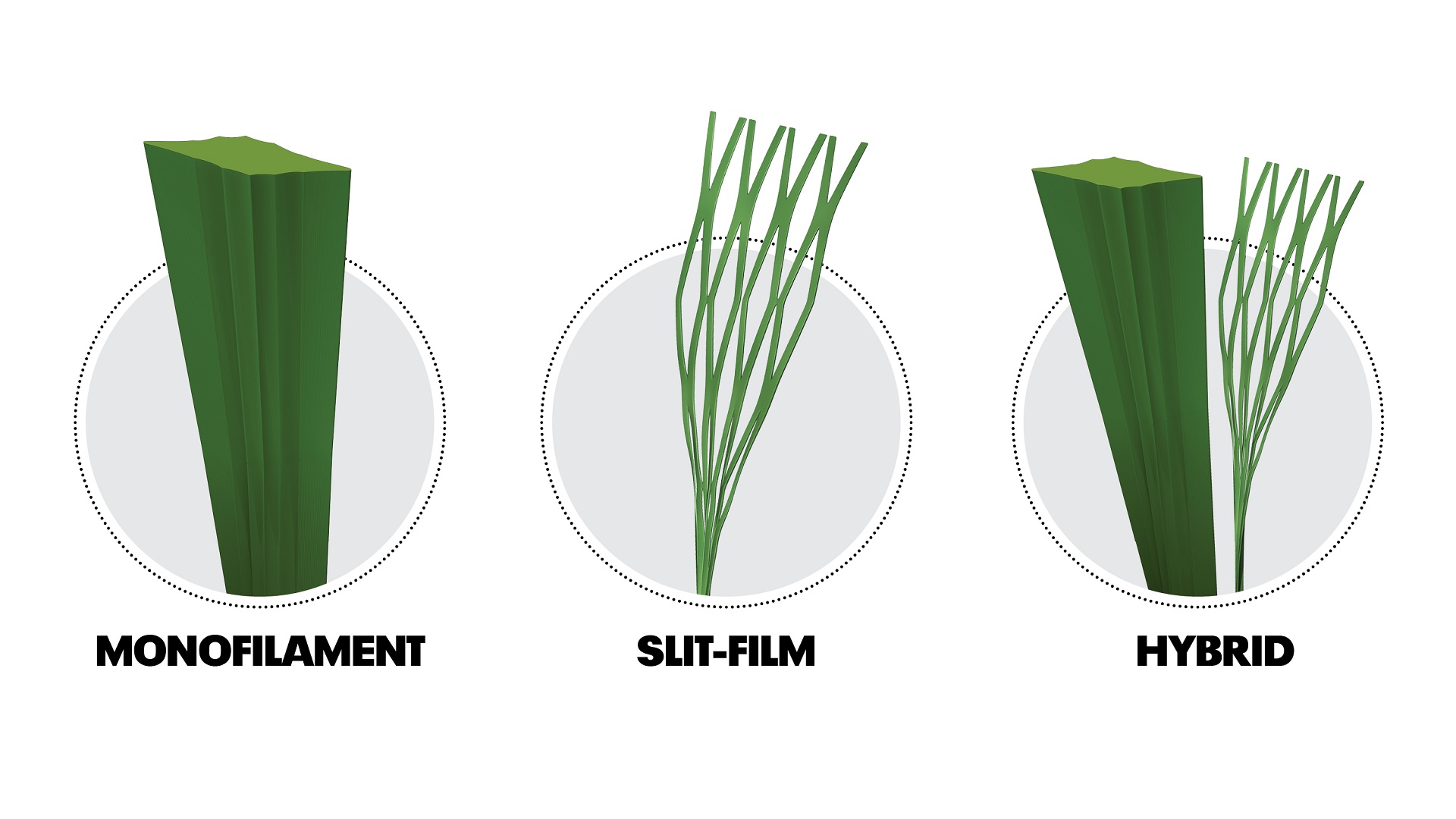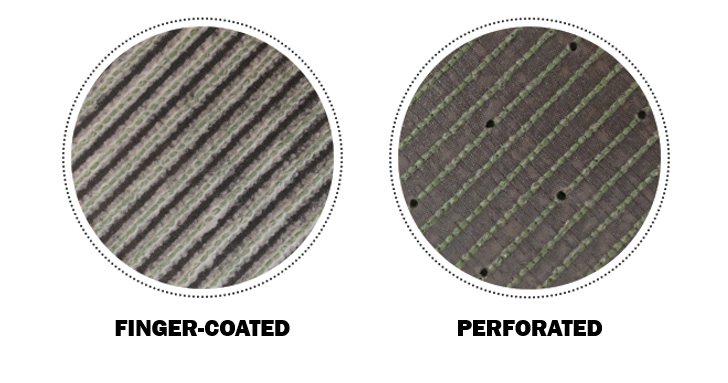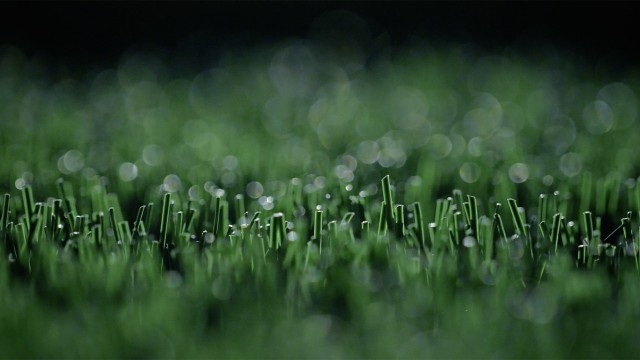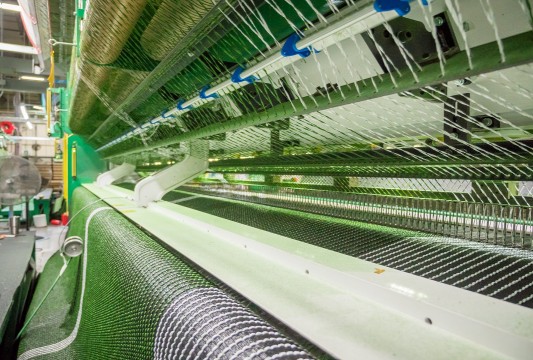The Guide to Building Your First Artificial Turf Field
You’ve decided to convert your natural grass field to artificial turf? That’s great news! We applaud your decision to offer your program a surface that delivers consistent playability, player- safety and is environmentally friendly.
So, what’s next? How do you get started?
Fundraising: To move forward, you’ll need the necessary funds to launch your project. You can raise funds through various avenues like your booster club, alumni, grants, advertising, or partnerships. Did you know you can even finance your field with our Tarkett Sports Financial program?
Design your dream field: This guide can help you evaluate what type of field is right for you.
Find your FieldTurf Expert: We have a team of leading experts to guide you through the process. Find your expert here.
So, what type of field is right for you? Most would think all artificial turf is the same, “green-side up, please,” but that’s the furthest from the truth. There are numerous manufacturers that each deliver a variety of different systems. Let’s start with the basics: fiber, infill, and backing:
TIP: Take note of “KEY QUESTIONS” to ask throughout the guide.
Fiber
Primarily made from polyethylene, the fibers act as the individual grass blades found in a natural grass field. These fibers are tufted (“stitched”) into a carpet or backingt. The carpet is packaged in rolls, and delivered on-site for assembly of the field.
The ideal fiber should showcase low skin friction, superior durability, high resilience, and temperature stability.
KEY QUESTION: Ask your supplier if they manufacture their own fiber and if they have test reports attesting to the fibers’ quality/durability.
Simple enough? But wait, there are several different types of fibers.

- Monofilament: “Mono,” a prefix that means “one, only, single,” relates toone individual fiber blade. It’s the most grass-like as it’s designed to stand up straight. These types of systems are visually appealing and deliver natural ball-to-surface characteristics (ball-roll, ball-bounce), making them a popular choice for sports like soccer, lacrosse, and even football.
- Slit-Film: These wider fibers are fibrillated to create a net or “honeycomb” which is designed to lie over and encapsulate the infill, while absorbing heavy use from kicks, drags, tackles and slides. These systems are designed to be tough and deliver optimal agility.
- Hybrid: With a combination of monofilament fibers and a slit-film fiber, hybrid systems are designed to provide fiber resilience while encapsulating the infill. It’s the best of both worlds. Due to the variety of fibers, these systems deliver a full, lush look.
KEY QUESTION: Ask if the two fibers are tufted in the same stitch. This new method is preferred for long-term aesthetics. If they’re tufted separately, the slit-film fiber can lay over while the monofilament will stand straight creating a visual of unevenness and waving in the field.
Did you know that by using the SmartBuy Cooperative Purchasing Program, the procurement process is simplified to a quick four-step process rather than the traditional method, which takes thirteen (or more) steps? Ask us about cooperative purchasing.
infill
If the fiber replicates the blades of grass, the infill acts as the…? You guessed it, the soil or dirt. Why is there a need for infill? Like in a natural grass system, you play in the soil and not on the grass. Infill is the cushioninglayer of the turf system which absorbs the impact of falls. More infill will lead to better shock absorption.
Infill plays a vital part in performance, safety, and energy restitution. Selecting an infill system that is heavy and stable is critical in giving your athletes long-term and consistent safety. Extensive research and studies have proven that a minimum of 3 lbs. of sand + 3 lbs. of rubber, for a total of 6lbs. per square foot, is required to ensure that your field meets the safety threshold. Do your research.
The recipe is simple: More infill = Increased safety. There are three popular types of infill systems:

- The three-layer: The system is built with a base layer of sand, a middle layer of sand and rubber, and a top layer of larger rubber. As the material properties of the rubber and sand in the middle layer interlock, the system offers added stability and energy restitution. Traditionally the heaviest system per square foot, the three-layer constructionoffers leading safety prevention. A proven system over the past 20 years, the three-layer system hasproven experience.
- The two-layer: This homogeneous infill system consists of a base layer of sand and a top layer of rubber to provide the optimal firmness required for athletic performance while providing proper shock absorption. A proven system over the past 20 years, the two-layer system has a dependable track record.
- The low infill: These systems are built on a pad and utilize a simple design, re-engineered with new age technology to offer an alternative surface solution constructed with thatch and either little rubber or completely rubber-free. This option can be the right choice for a variety of facilities depending on needs.
Here are the guidelines to follow to build a safe field:
- Demand infill weights from every turf company.
- Establish your infill weight minimums and have them written in the specifications. Make sure it’s at least 6 lbs of infill per square foot.
- Don’t just list volume or weight ratios – you don’t want companies cutting corners. Make sure the actual weight of sand and rubber is specified.
KEY QUESTION: Ask for independent safety research to validate the system’s safety. Do your research, trust the science, and don’t sacrifice on safety*
infill Options
When selecting your infill material, there are many options and categories, all with their own distinct benefits and drawbacks. The standard choice of infill material is styrene-butadiene rubber (SBR), which is primarily obtained through recycling the rubber in car tires. Two types of SBR rubber are created through unique processes:
Cryogenic SBR Rubber: The premier option of the two solutions, cryogenic SBR rubber is first ground through a mill, and then the smooth particles are separated from the rougher particles. Once separated, the rubber is first frozen to a temperature of below -80 degrees Celsius (-112 degrees Fahrenheit,) creating a glass-like material which is processed again, this time through a specialized mill that cuts the frozen rubber into small, smooth and rounded particles. Cryogenic SBR rubber offers numerous benefits. Due to its round shape, the infill facilitates a consistent flow of water through the system, limiting the risk of infill migration caused by air bubbles in the system. Cryogenic SBR rubber connects effectively with silica sand to deliver premier energy restitution back to the athlete..
Ambient SBR Rubber: During the grinding phase, ambient rubber is simply processed through a high-powered rubber mill. The result is granules that may be inconsistent in shape, with some appearing more jagged than others. Both cryogenic and ambient SBR rubber offer customers a quality system that has been tested, proven, and utilized in thousands of installations around the world.
Alternative & Natural Infill Options
There is a wide array of infills for programs interested in alternative solutions to styrenebutadiene rubber (SBR). Before exploring options, it’s essential to review the key questions to ask when researching “alternative solutions”:
- Does the infill require additional irrigation?
- Does the system require the installation of an underlayment “shock pad”?
- Does the infill require additional maintenance?
- What's the lead time for the delivery of the material?
- What's the increased cost vs styrene-butadiene rubber (SBR)?
Let’s explore alternative solutions:
Natural Infills: These systems are produced using natural or organic materials, often helping divert waste from landfills. All natural infills will require the installation of an underlayment “shock pad” under the system to provide the proper shock absorption. Natural infills can be made from granulated olive cores, corn, coconut peat, cork, and more.
Post-Industrial Recycled Rubber: The systems are produced using reclaimed post-industrial materials from various sources to create an alternative solution to SBR. A popular option is shoe grind material, created using excess/waste materials from leading shoe manufacturers. These infills will deliver similar performance, safety, and durability characteristics to the traditional styrene-butadiene rubber infill.
TPE - Thermoplastic Elastomer: TPE is made from a class of copolymers or a physical mix of polymers and will also deliver similar performance, safety, and durability characteristics to the traditional styrenebutadiene rubber infill. Selecting a high-quality TPE can come at an expense but is crucial to ensure it can withstand rigorous mechanical wear and weathering.
Backing and Drainage
Why is the choice of backing so important? As the rows of fibers are tufted in the backing, they need to be coated to secure them in place. Your choice of coating application can lead to improved drainage results.
There exists two types of coating / backing systems:

- Perforated Backing: The coating is applied across the entire backing and then holes are punched to let water out drain through when it rains. The thousands of hole allow for quick drainage.
- Finger-Unit Backing: The coating is only applied on the rows where fibers are tufted, leaving the rest of the backing completely porous for drainage. This method allows for ultra-quick drainage.
Depending on your budget, the region you’re in, and the use that you’re aiming to get out of your field, it may be worthwhile to invest in a superior drainage system. The right drainage system will ensure that your field can be used at all times—allowing you to maximize your investment. You don’t want to convert from a natural grass field that doesn’t drain to a turf field that doesn’t drain.
The recipe is simple: Better drainage = More field use
Remember, when you’re building your field, you’re in control. Set the proper minimums to ensure every supplier adheres to your guidelines. Plan for long-term durability and don’t sacrifice on safety.
Project Planning, Design, Construction, and installation
Converting a natural grass sports field to artificial turf involves several key steps, each aimed at ensuring a durable and high-performing surface. Here's an overview of the process:
1. Planning and Assessment:
- Site Evaluation: The existing field is assessed for drainage, soil conditions, and potential project obstacles, including permitting requirements.
- Design Considerations: Decisions on the turf system type, infill material, and any additional features are made during this stage.
2. Removing Existing Grass and Soil:
- Grass Removal: The natural grass, along with the top layer of soil, is removed.
- Excavation: The field is excavated to a specific depth (usually 12-18 inches) to accommodate the base layers of the artificial turf system.
3. Installing the Base Layers:
- Sub-Base Preparation: To provide a stable foundation, a sub-base layer, typically composed of compacted stone, gravel, or crushed rock, is installed. This layer is graded for proper slope and drainage.
- Drainage System: A drainage system (perforated pipes or drainage tiles) is installed to ensure efficient water management and prevent water pooling on the turf surface.
4. Installing the Turf Surface:
- Turf Installation: The artificial turf rolls are laid out and trimmed to fit the field. Seams are stitched together to assemble the field from end to end.
- Line Markings: Permanent field markings (e.g., lines, logos) are added by inlaying an additional turf carpet
- Infill Application: The infill material is spread evenly across the turf to provide the proper shock absorption and surface stability.
5. Final Grooming and Inspection:
- Brushing and Grooming: The turf is brushed to help the infill settle and ensure the fibers stand upright.
6. Finishing Review:
- Closeout: A final round of checks ensures the field is ready for play, including safety checks for field hardness, seams, and infill levels.
The process typically takes a few weeks but can vary depending on permit requirements, field size, weather conditions, and specific project requirements.


